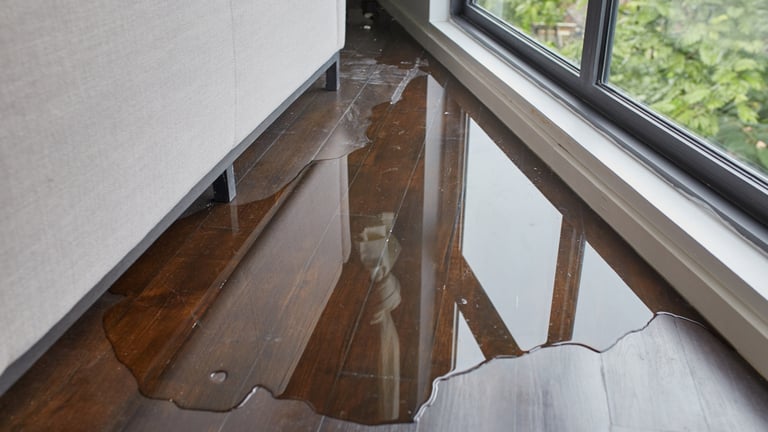Do's & Don'ts of Water Restoration.
Do's & Don'ts of Water Restoration.
Blog Article
Are you interested in information concerning Fire And Water Damage Prevention?

Water offers life, yet water breach on some components where it's not supposed to be can result in damage as well as trouble. If the water leaks right into your framework, it can peel away the surface as well as deteriorate the product's structure. Mold and mildew additionally grow in a wet setting, which can be unsafe for your and also your household's health and wellness. Additionally, homes with water damages scent moldy and old.
Water can come from many sources like hurricanes, floodings, ruptured pipelines, leakages, and sewer concerns. If you have water damages, it's much better to have a functioning expertise of safety precautions. Below are a few guidelines on exactly how to take care of water damage.
Do Prioritize Residence Insurance Coverage Protection
Seasonal water damage can come from floodings, seasonal rainfalls, as well as wind. There is additionally an event of an unexpected flooding, whether it came from a damaged pipe that all of a sudden ruptures into your residence. To safeguard your house, obtain house insurance policy that covers both acts of God such as all-natural calamities, and emergency situations like busted plumbing.
Don't Fail To Remember to Switch Off Energies
When catastrophe strikes and also you remain in a flood-prone area, turn off the main electrical circuit. Switching off the power prevents
electrical shocks when water can be found in as water serves as a conductor. Don't fail to remember to shut off the primary water line shutoff as a means to stop even more damage.
Keep your furniture stable as they can relocate about and also create additional damage if the floodwaters are getting high.
Do Stay Proactive and Heed Weather Notifies
If you live in an area tormented by floodings, stay prepared as well as proactive at all times. Pay attention to the news as well as emptying cautions if you live near a body of water like a creek, lake, or river .
Don't Ignore the Roof
Your contractor needs to take treatment of the damaged seamless gutters or any kind of other signs of damages or weakening. An evaluation will avoid water from streaming down your walls and saturating your ceiling.
Do Take Notice Of Tiny Leakages
There are red flags that can attract your interest and show to you some weakened pipelines in your house. Indicators of red flags in your pipelines consist of gurgling paint, peeling off wallpaper, water streaks, water stains, or trickling sounds behind the wall surfaces. Repair service and evaluate your plumbing fixed before it results in substantial damages to your house, funds, as well as an individual headache.
Don't Panic in Case of a Ruptured Pipe
Timing is vital when it comes to water damages. If a pipeline ruptureds in your residence, right away closed off your major water shutoff to reduce off the resource and also protect against even more damages. Call a respectable water damage restoration expert for assistance.
Water gives life, but water intrusion on some components where it's not supposed to be can result in damages and hassle. In addition, homes with water damages smell old and stuffy.
Seasonal water damages can come from floods, seasonal rains, and also wind. Indicators of red flags in your pipelines include gurgling paint, peeling off wallpaper, water touches, water spots, or dripping sounds behind the wall surfaces. If a pipeline bursts in your residence, quickly closed off your primary water shutoff to cut off the resource as well as avoid more damages.
Some Do's & Don't When Dealing with a Water Damage
DO:
Make sure the water source has been eliminated. Contact a plumber if needed. Turn off circuit breakers supplying electricity to wet areas and unplug any electronics that are on wet carpet or surfaces Remove small furniture items Remove as much excess water as possible by mopping or blotting; Use WHITE towels to blot wet carpeting Wipe water from wooden furniture after removing anything on it Remove and prop up wet upholstery cushions for even drying (check for any bleeding) Pin up curtains or furniture skirts if needed Place aluminum foil, saucers or wood blocks between furniture legs and wet carpet Turn on air conditioning for maximum drying in winter and open windows in the summer Open any drawers and cabinets affected for complete drying but do not force them open Remove any valuable art objects or paintings to a safe, dry place Open any suitcases or luggage that may have been affected to dry, preferably in sunlight Hang any fur or leather goods to dry at room temperature Punch small holes in sagging ceilings to relieve trapped water (don't forget to place pans beneath!); however, if the ceiling is sagging extremely low, stay out of the room and we'll take care of it DO NOT:
Leave wet fabrics in place; dry them as soon as possible Leave books, magazines or any other colored items on wet carpets or floor Use your household vacuum to remove water Use TV's or other electronics/appliances while standing on wet carpets or floors; especially not on wet concrete floors Turn on ceiling fixtures if the ceiling is wet Turn your heat up, unless instructed otherwise

As a passionate reader about Simple Solutions To Preventing Fire And Water Damage To Your Home, I assumed sharing that piece of content was smart. Are you aware of anybody else who is curious about the topic? Do not hesitate to promote it. Thank-you for taking the time to read it.
Report this page